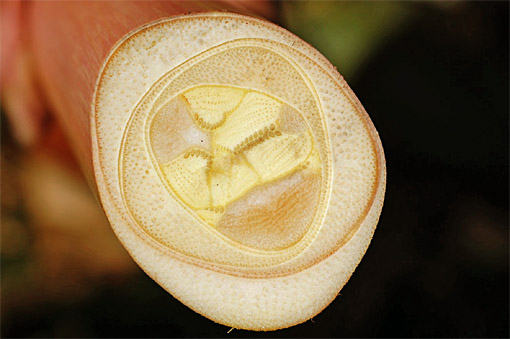|
|
|
|
|
|
Palm heart Production
|
|
|
|
|
|
Palm heart is composed out of a bunch of leaf sheaths, the apical meristem and the young leaves in process of differentiation or newly differentiated. To extract it, the plant has to be cut down and the fibrous, not edible sheaths have to be removed.
Depending on the variety, from a palm tree about 10 cm in diameter 300 g of palm heart can be harvested (NODARI & FANTINI 2000). The extraction of palm heart for food production was done on a small scale, starting up the industrial production of cans in the 30s (FANTINI et al. 2004). Today the product is merchandised in pieces of 8 to 9 cm in glasses of 300 grams (net) and cans of 400 or 500 grams, or cut into larger pieces in cans of 1200 g. Furthermore the palm heart is commercialized as ‘picadinho’, a product exploiting the parts smaller than 9 cm and chopped into small pieces. The latter is sold in glasses of 300 g, with the main market of pastries, pizzerias and bakeries. From the nutritional point of view the high levels of iron, up to 3.6 mg per 100 grams are outstanding.
In contrast to other palms, such as the peach palm (pupunha) - Bactris gasipaes - of which the palm heart can already be extracted after three years of cultivation (Schmidt et al. 2006), the palm heart of E. edulis needs eight to twelve years to reach the Brazilian market size.
|
|
|
|
 |
|
|
|
|
To allow natural regeneration of the species, in a palm plantation palms should be cut only in a turn of three to four years. The cut is recommended only after the first flowering. Premature cutting of the tree avoids natural regeneration of the species through seeds. Being unable to produce tillers like açaí (Euterpe oleracea) and pupunha (Bactris gasipaes) palm heart collecting of E. edulis necessarily means the death of the plant (TSUKAMOTO FILHO et al. 2001).
Between cutting of the palm and the peeling for further marketing, the marketed product is called ‘head’ or ‘clean head’ of the palm. The so called 'clean head' is the palm still wrapped in a variable number of leaf sheaths already differentiated and therefore improperly for consumption. It has the function of protecting the palm heart during the transport and against its oxidation. Thus, the yield on palm heart of a plant can only be determined after stripping the 'clean head' and cutting it into pieces.
|
|
|
|
|
|
|
|
|
